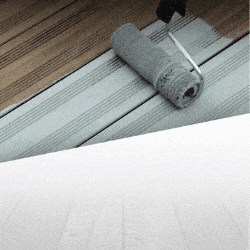
How does hardwood timber decking weather
How does hardwood decking weather?
Tropical hardwood such as Ipe, Elondo, Massaranduba and many others all have their own behaviour when used as timber decking. Some are considered livelier than others, some are harder wearing, some are oiled and some not…There are never two decks the same as they are built as bespoke projects for private clients, architects and designers.
Assuming we left our hardwood decking to weather naturally it will most certainly change colour. The colour contained within natural timber is presented as Tannin within the structure of the timber. This tannin varies from species to species and also varies depending on what part of the tree the timber is from.
The tannins are washed out of the timber as part of the weathering process by the rain and bleached by the UV from the sun.
Effects of weathering on timber decking.
There are many effects that change the appearance of the timber. As the water transpiration through the timber causes the timber to expand and contract, over time the timber will lose some its natural oils and thus cause the timber to dry out and shrink slightly. This effect will show as checks, fissures and appear as splitting on the surface of the decking. This is not detrimental to the performance of the decking and does not affect the structural qualities of your deck, it is reality and what will actually happen.
How do keep hardwood decking looking new?
This is a battle many owners of tropical hardwood decks take up every year. There are far too many inferior products on the market from the sheds that purport their use will keep the colour of your decking…… My advice for the majority of decking stains and or treatments is to stay away from them and only use quality timber decking oil.
So how do we keep the colour of the original deck, in the first instance it is advisable to apply Seasonite or Deks olje D1 saturating and stabilizing oil. This balances and reduces the transpiration rate of water moving in and out of the timber. This in turn reduces the movement of the timber.
After 6 to 8 months post treatment it would be advisable to then strip the deck back using Oxalic acid, known as Netrol. This reacts with the timber and draws contaminants out of the timber and also draws tannin back to the surface. At the same time it also neutralizes the timber ready to take another coating of Exterior Timber Oil. You can then set applying the Textrol Timber oil or Deks olje 1 and 2
Should I sand my hardwood decking installation?
would normally say to the end user/client, no! The reason is quite simple – the majority of hardwood timbers are so hard you would be there sanding away for just about “ever”. To the seasoned contractor or installer I would say sanding would only be required when you provide a detailed and deep clean service after approx’ 5 years after installation.
Acceptable defects in hardwood decking after installation
As one can appreciate that timber is a natural and organic product, we cannot therefore expect it to look as perfect as it did on installation for very long. As we have looked at different methods of oiling, to enhance the colour and increase longevity, we need to understand what is acceptable after installation.
So now we know that the colour is going to fade out to a homogenous silver grey, the exact colour is different depending on species, foot traffic and treatment that the deck has had.
Fissures, checking and movement, these are all acceptable attributes of decking after it has been installed. The time taken for them to appear will depend on many factors, foot traffic, weather, treatments used etc.
Fissures are small, and what look like splits on the flat face of the deck board that run in line with the grain, often repeating in large numbers but small in length, maybe up to 20mm. The width would be no more than 1mm to 2mm, although it depends on what type of timber and how dry it is, the thing that you need to consider is that when it rains they will close up…Fissures can’t be avoided and will happen on all timber decking and is something not to worry about.
Checking is where it appears that splitting is visible on the short cut ends of the deck board, again these a usually small and no more than 20mm long and 1 or 2mm wide, however it does depend on the age, moisture content and timber species. Checking will happen on all decking and can’t be avoided; a point to note is that checking can be made worse by not pre-drilling when fixing the boards and also putting screws too near the end of the boards.


